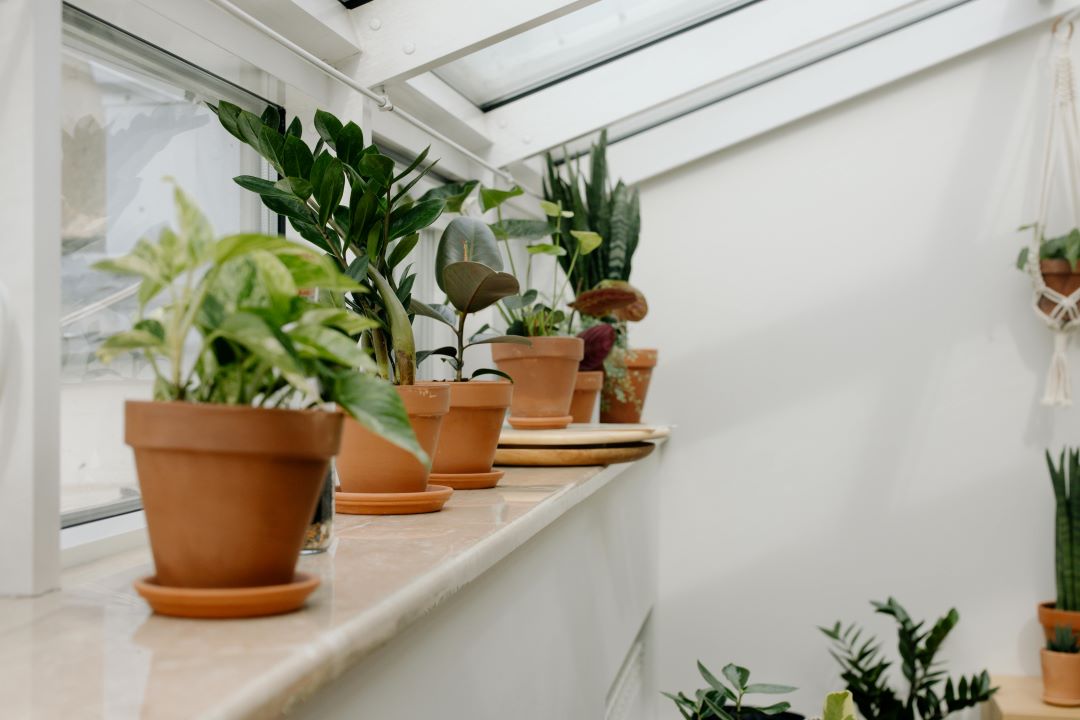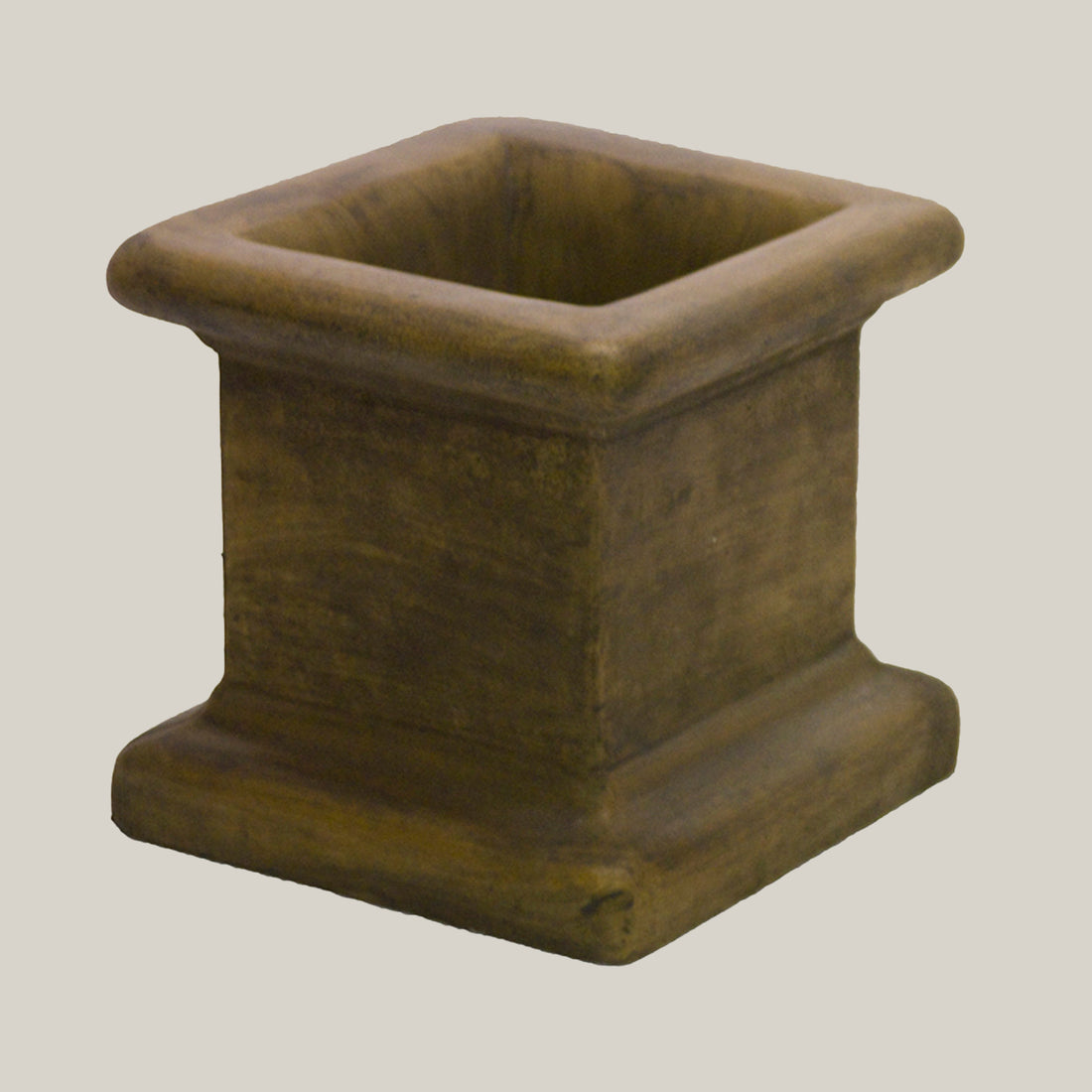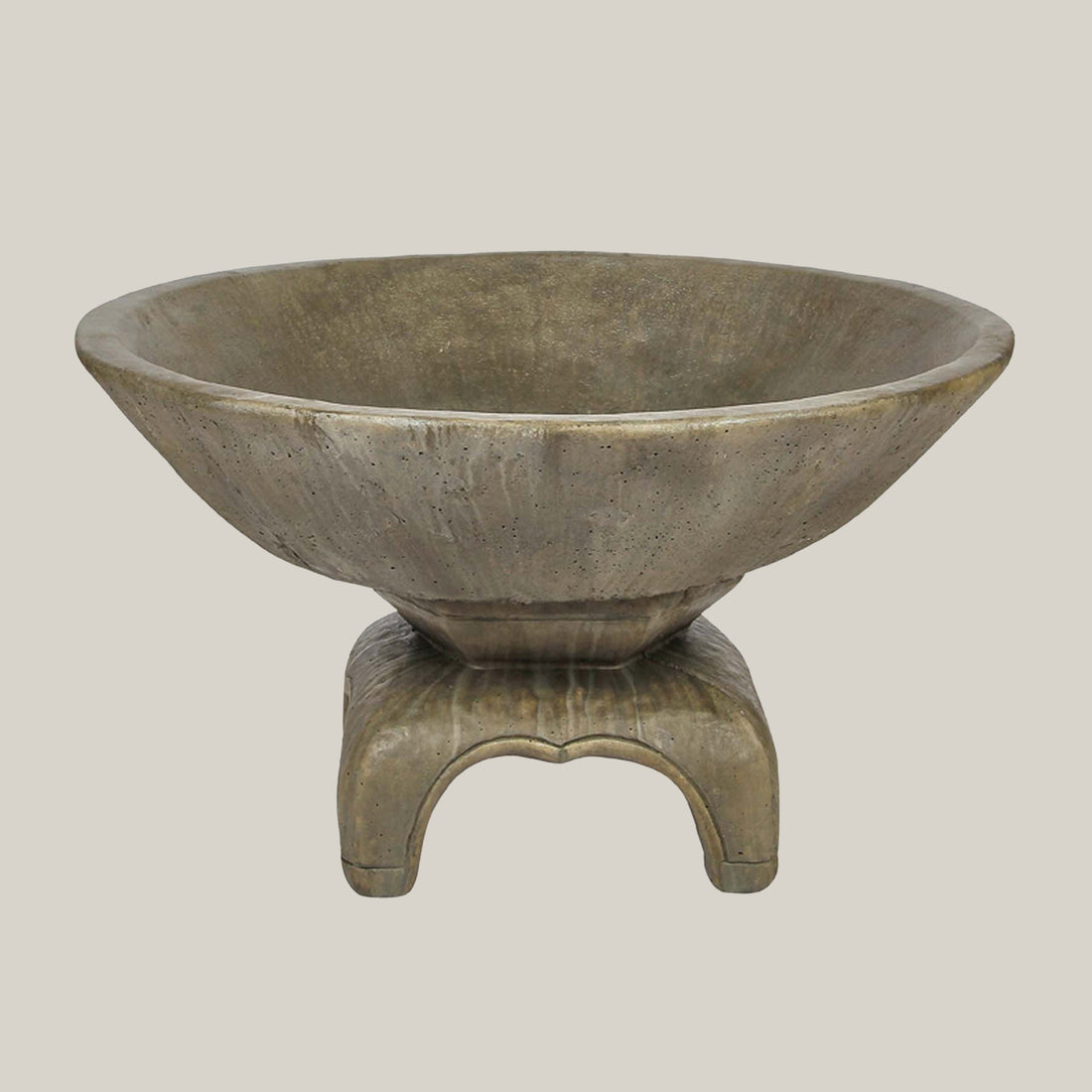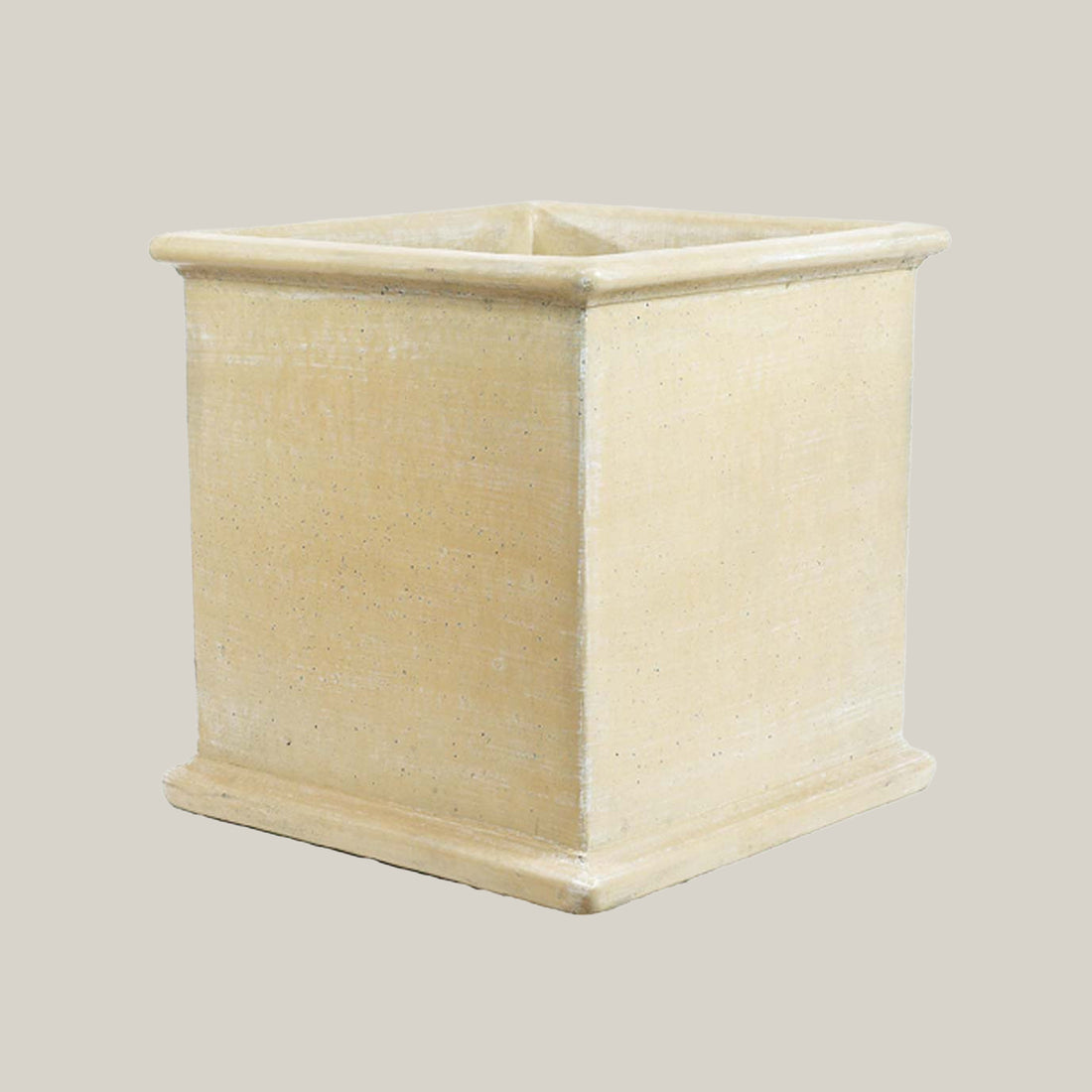When we bring a new plant into our home or garden, we often focus on the pot and the plant itself, but the saucer beneath it deserves just as much thought. A saucer is not just a catch basin for extra water; it also plays a role in how healthy your plants grow and how tidy your space stays. If it’s too small, water spills over and damages your floors. If it’s too large, it can retain stagnant water and harm the roots. Choosing the right size creates a balance between plant care, cleanliness, and design.
Understanding the Function of a Saucer
Before considering size, it's helpful to understand what a saucer actually does. It may look like a simple dish, but it plays a much bigger role in keeping both your plants and your home in good shape. A well-sized saucer catches excess water, preventing it from spilling onto floors or patios, while still allowing soil to drain properly. When it has enough depth, it can hold water briefly without cutting off airflow at the base of the pot, which keeps roots from sitting in stagnant moisture. At the same time, it protects surfaces like wood, tile, or concrete from stains and mineral buildup, making it a small but important detail in successful plant care.

Matching Saucer Size to Pot Dimensions
The first thing to consider when choosing a saucer is how well it matches the size of your planter. Pots and saucers need to work together as a pair, and when they don’t match, problems can follow.
Diameter Rules of Thumb
A good rule of thumb is to pick a saucer that’s about one to two inches wider than your pot’s diameter. This extra space allows water to collect without overflowing. For instance, if your planter measures 10 inches across, a saucer that’s 11 to 12 inches wide will be just right.
Height and Depth Matter
Saucers come in different depths, and the right fit really depends on your plant’s watering habits. Shallow saucers are usually enough for small indoor pots that don’t require much moisture, while deeper ones are better suited for larger planters or plants that need more water. Ultimately, depth determines how much water the saucer can safely hold before it spills.
Testing Fit Before Use
One of the simplest ways to check the fit is to set your planter in the saucer and give it a light watering. If water collects evenly and the pot feels steady, you’ve got a good match. If it wobbles or the water flows out quickly, you may need to adjust the size.
The Role of Plant Type in Saucer Sizing
Different plants absorb water differently, which means their saucer needs aren’t all the same. Knowing how your plant handles moisture makes it easier to pick the right size.
Moisture-Loving Plants
Plants like ferns, calatheas, or peace lilies thrive in consistently damp soil. For them, a slightly larger or deeper saucer is helpful, as it allows a small reserve of water to remain at the bottom. This keeps the soil moist longer between waterings.
Drought-Tolerant Plants
Succulents, cacti, and other desert plants are the opposite. They prefer dry conditions and suffer if water lingers around the roots. For these plants, smaller saucers or, in some cases, no saucer at all work better because they prevent accidental overwatering.
Edibles and Herbs
When you’re growing herbs or vegetables, a medium-sized saucer is often the best choice. These plants thrive on steady moisture but still need good drainage to keep their roots healthy. A saucer that balances both ensures healthy growth without constant monitoring—for instance, an 8"-15" white ceramic plant saucer provides ample space for drainage while keeping your surfaces protected.

Indoor vs. Outdoor Saucer Needs
Where your planter sits also shapes how large its saucer should be. Indoor and outdoor environments create very different challenges.
Indoor Settings
Inside the home, spill prevention is a top priority. A saucer that is too small can let water leak onto carpets or hardwood floors, causing damage that’s difficult to repair. A slightly larger saucer also helps keep dust and soil contained, giving your space a cleaner look.
Outdoor Settings
Outdoors, plants usually receive more frequent and heavier watering, whether from rain or a hose. In this case, deeper saucers prevent messy overflow while also reducing soil erosion at the pot’s base. However, you still want to avoid oversized saucers, as they can collect too much water and attract mosquitoes.
Balcony and Patio Use
On balconies or patios, space is often limited, and standing water can become a nuisance. Here, a snug-fitting saucer is better, one that catches just enough water without leaving large pools behind. This approach reduces weight for easier moving and prevents water from dripping onto neighbors or lower levels.
Material Influence on Size Choice
The material of a saucer can also affect the size you should choose. Each type behaves differently with water and weight, which changes how you plan around it.
Plastic
Plastic saucers are lightweight and affordable, but they can bend under the weight of heavy pots. To avoid tipping or instability, it’s often safer to size slightly larger than the base of the pot so the saucer supports more evenly.
Ceramic
Ceramic saucers are sturdy and attractive, but they’re heavy and not easy to move. Because they sit flush with the pot, sizing has to be precise. Too large and they look bulky; too small and water escapes around the edges. A versatile option, such as 8"-24" turquoise ceramic plant saucer pairs beautifully with different planter sizes while adding a subtle pop of color.
Metal and Composite
Metal or composite saucers are sturdy and well-suited for outdoor use, but unlike clay, they don’t absorb moisture and often hold water for longer periods. Choosing the right size is important so water doesn’t collect too deeply at the base. A properly fitted saucer will retain just enough without leaving a constant puddle.

Style and Aesthetic Considerations
Function matters most, but the look of a saucer also influences how your planter fits into a space. The right size can tie the whole arrangement together.
Visual Proportion
When a saucer is noticeably too large or too small, it throws off the balance of the planter. A saucer that lines up proportionally with the pot creates a more polished, intentional look. The right proportion also helps the planter sit securely, reducing the chance of tipping or looking awkward in its space.
Color and Shape Choices
Saucers come in a wide range of colors and shapes, and both can influence how they look alongside your planter. A matching color helps the saucer blend in seamlessly, while a contrasting one makes it pop. Shape matters too—a square saucer under a round pot, for example, creates a completely different style. A Double Blue Round Ceramic Planter with Saucer is a great example of how matching color and form can make the whole setup feel polished and intentional.
Practical Tips for Measuring and Buying Saucers
Getting the size right becomes easier when you measure properly before buying. A few simple steps can save you time and frustration.
Measuring at Home
Begin by measuring the base of your planter, since most pots narrow toward the bottom. Match this measurement with the inner diameter of the saucer so the pot sits securely without gaps. Also, pay attention to the number of drainage holes, as pots with several openings may need a slightly wider saucer to catch water evenly.
Considering Future Growth
If you expect to repot your plant into something larger soon, it’s worth choosing a saucer that gives you a little extra room. This way, you won’t have to replace it every time the plant grows in size.
Buying in Sets
For households with multiple planters, buying saucers in sets is convenient. Not only does it ensure consistency in style, but it also makes it easier to find a range of sizes that match different pots. This approach saves time when expanding your collection.
Common Mistakes to Avoid When Choosing Saucer Size
Even with the best intentions, it’s easy to make sizing mistakes. Knowing the most common ones helps you avoid headaches later.
Going Too Small
When a saucer is undersized, water spills over and damages the surface below. It also defeats the purpose of having a saucer in the first place. A small saucer can also make the planter unstable, especially if the base of the pot doesn’t sit fully inside it.
Going Too Large
Oversized saucers may look safe, but they often hold excess water that lingers too long. This creates a breeding ground for pests and leaves the soil soggy. They can also add unnecessary bulk, making the planter harder to move or less visually balanced.
Ignoring Material Absorption
Clay or terracotta saucers can absorb water, reducing the amount left for the plant but still allowing moisture to seep onto surfaces. Factoring this in ensures you don’t misjudge how much water your saucer truly holds. Over time, this absorption can also lead to staining, so it’s wise to use a liner or choose a different material if surface protection is a concern.
Finding the Right Saucer Size for Your Planter
The right saucer size keeps your plants healthier, protects your surfaces, and adds to the overall style of your space. By paying attention to pot dimensions, plant type, location, and material, you can choose a saucer that works well without guesswork. Every detail—whether it’s depth, width, or material—shapes how water is managed and how stable your planter feels. A saucer may seem small, but it plays an equally important role in connecting the plant and pot, so everything stays in balance. If you’re ready to find the perfect fit, explore the wide selection of planters and saucers available at Ten Thousand Pots to give your plants the best home possible.
Related Content
Ceramic Plant Saucers 101: Benefits, Sizing & Styling





